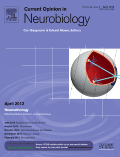
GLIA
Scope & Guideline
Shaping the Future of Neurological Research
Introduction
Aims and Scopes
- Neuroinflammation and Immune Responses:
Research on the role of glial cells, particularly microglia and astrocytes, in mediating neuroinflammation, immune responses, and their contributions to neurodegenerative diseases. - Myelination and Oligodendrocyte Biology:
Exploration of oligodendrocyte development, myelination processes, and the impact of glial cells on neuronal health and function, particularly in conditions like multiple sclerosis. - Glial Cell Heterogeneity and Function:
Studies focusing on the diversity of glial cell types, their distinct functions, and how this heterogeneity influences neurological health and disease. - Glia-Neuron Interactions:
Investigations into the complex interactions between glial cells and neurons, including how these interactions affect synaptic plasticity, neurotransmission, and overall brain function. - Regenerative Mechanisms:
Research aimed at understanding the regenerative potential of glial cells, particularly in response to injury and during disease, including the role of stem cells and neurogenesis. - Metabolic Regulation and Homeostasis:
Studies examining how glial cells regulate metabolic processes in the brain, including energy homeostasis, and their role in supporting neuronal function.
Trending and Emerging
- Role of Extracellular Vesicles:
Research on how glial-derived extracellular vesicles influence neuronal function and intercellular communication is gaining traction, highlighting their potential as biomarkers and therapeutic targets. - Astrocyte Plasticity and Regeneration:
Increasing attention is being given to the regenerative capabilities of astrocytes, particularly in response to injury, as studies explore their potential for promoting recovery in neurodegenerative diseases. - Neuroinflammation and Disease Mechanisms:
The relationship between chronic neuroinflammation and various neurological disorders is a rapidly growing area of research, emphasizing the role of glial cells in disease progression. - Sex Differences in Glial Function:
Emerging research is focusing on the influence of sex on glial cell function and neuroinflammatory responses, revealing important insights into how gender may affect disease susceptibility and outcomes. - Integrated Omics Approaches:
There is a notable trend towards using multi-omics approaches to understand glial cell biology, integrating genomics, proteomics, and metabolomics to uncover complex regulatory networks. - Mechanobiology of Glial Cells:
Studies investigating how mechanical forces and the physical properties of the extracellular matrix influence glial behavior and function are on the rise, reflecting a broader interest in glial mechanotransduction.
Declining or Waning
- Basic Astrocyte Functionality:
Research focusing solely on the basic functionalities of astrocytes, such as ion uptake and neurotransmitter recycling, appears to be waning as studies increasingly emphasize the complex interactions between glial cells and other cell types. - Single-Cell Analysis in Glial Research:
While single-cell techniques were once a major focus, there seems to be a shift towards integrating these findings with broader network studies and functional assays, indicating a transition towards more holistic approaches. - Traditional Neuroprotective Strategies:
There is a noticeable decrease in studies using traditional neuroprotective agents in isolation, as the field is now moving towards combinatorial and multi-target therapeutic strategies. - Static Models of Glial Function:
Research employing static in vitro models of glial function is becoming less common as dynamic models, including organoids and co-culture systems, gain prominence in exploring glial-neuronal interactions.
Similar Journals

MOLECULAR NEUROBIOLOGY
Fostering Excellence in Neuroscience ResearchWelcome to Molecular Neurobiology, the premier journal dedicated to the exploration of the molecular mechanisms underlying nervous system function and pathophysiology. Published by Springer, this journal provides an essential platform for disseminating high-quality research in the rapidly evolving fields of Cellular and Molecular Neuroscience and Neurology, boasting an impressive impact factor that reflects its esteemed position within the academic community. With its ranking in the Q1 and Q2 quartiles for various neuroscience categories, Molecular Neurobiology stands at the forefront of groundbreaking discoveries, showcasing innovative studies that bridge basic science and clinical application. Researchers and professionals are invited to contribute to its rich portfolio, which spans from fundamental insights into cellular processes to advanced therapeutic strategies. Although Molecular Neurobiology does not operate as an Open Access journal, its influential body of work remains accessible through institutional and personal subscriptions. As we converge from 1987 to 2024, we continue to aim for excellence, seeking to catalyze progress in understanding neurological diseases and enhance the scientific dialogue within the neuroscience community.

JOURNAL OF NEUROIMMUNOLOGY
Connecting the Dots Between Brain and ImmunityJOURNAL OF NEUROIMMUNOLOGY is a premier academic journal dedicated to exploring the intricate interactions between the nervous and immune systems. Published by Elsevier, this journal has been at the forefront of neuroimmunology research since its inception in 1981 and continues to disseminate high-quality, peer-reviewed articles that are critical for advancing understanding in the fields of immunology, neurology, and neuroscience. With an impressive impact factor and a Q2 ranking in multiple categories including Neurology and Immunology and Allergy, it serves as an essential resource for researchers, clinicians, and students alike who seek to deepen their knowledge of the neuroimmune landscape. The journal’s rigorous selection process ensures that only the most relevant and impactful research is published, fostering a vibrant academic discourse and facilitating knowledge transfer among professionals in the field. Although the journal is not open access, its contributions to both therapeutic insights and foundational research make it a valuable asset for those committed to the advancement of neuroimmunological science.

TRENDS IN CELL BIOLOGY
Exploring the Frontiers of Cellular InnovationTRENDS IN CELL BIOLOGY, published by CELL PRESS, is a premier journal in the field of cell biology, recognized for its high-impact contributions since its inception in 1991. As a distinguished member of the Q1 quartile within its category, the journal holds an impressive Scopus ranking of #8 out of 285, placing it in the 97th percentile of the field, which underscores its reputation for excellence. The journal serves as an essential resource for researchers, professionals, and students who are engaged with groundbreaking advancements in biochemistry, genetics, and molecular biology. Although it is not open access, it provides critical insights into the latest trends, reviews, and advancements in cell biology, making it a crucial tool for anyone committed to understanding the complexities of cellular systems. With a focus on innovative and transformative research, TRENDS IN CELL BIOLOGY continues to shape the discourse in cell biology and enhance the scientific community's knowledge.

NEUROSCIENTIST
Illuminating the Path to Neurological BreakthroughsNEUROSCIENTIST is a leading journal in the field of clinical neurology and neuroscience, published by SAGE Publications Inc. With an impressive impact factor reflected in its Q1 quartile ranking in both clinical neurology and miscellaneous neuroscience as of 2023, this journal positions itself as a crucial platform for the latest research and advancements in the neural sciences. Spanning from 1995 to 2024, NEUROSCIENTIST features a range of high-quality, peer-reviewed articles that cater to researchers, practitioners, and students alike. Although it does not offer Open Access options, the journal remains a vital resource owing to its Scopus rankings, situating it within the top percentile of its categories: ranked #28 out of 400 in clinical neurology and #15 out of 113 in general neuroscience. The journal's commitment to disseminating significant findings underlines its importance in fostering advancements in neurological understanding and treatment.

ASN Neuro
Elevating Knowledge in Clinical Neurology and NeuroscienceASN Neuro is an esteemed academic journal published by Frontiers Media SA, focusing on critical advancements in the fields of neurology and neuroscience. Since its inception in 2009, it has established itself as an Open Access platform dedicated to fostering the dissemination of knowledge and research findings that address the complexities of the nervous system. With an impressive impact factor and consistently ranking in the top quartiles of its categories—Q1 in Neurology (clinical) and Q2 in Neuroscience (miscellaneous)—ASN Neuro is recognized for its high-quality publications that cater to the evolving challenges in clinical neurology and general neuroscience. Currently, it ranks 68th out of 400 journals in Clinical Neurology and 28th out of 113 in General Neuroscience, affirming its reputable position within the academic community. Researchers, professionals, and students alike are encouraged to contribute to and benefit from this impactful journal as it presents a unique opportunity to engage with cutting-edge research, innovative methodologies, and insightful reviews in the ever-evolving landscape of brain science.

Frontiers in Neuroscience
Innovating research for a deeper cognitive insight.Frontiers in Neuroscience, published by FRONTIERS MEDIA SA, is a premier open-access journal dedicated to advancing our understanding of the nervous system through innovative and rigorous research. Since its inception in 2007, this journal has become an influential platform for researchers, featuring a diverse range of topics across various subfields of neuroscience. With its current ranking in the second quartile (Q2) of the category "Neuroscience (miscellaneous)" and a commendable position of #40 out of 113 in general neuroscience according to Scopus, Frontiers in Neuroscience is recognized for its high-impact contributions. The journal promotes free access to scholarly work, ensuring that cutting-edge neuroscience studies reach a global audience and foster collaboration across disciplines. By bridging gaps in knowledge and facilitating the exchange of ideas, Frontiers in Neuroscience plays a pivotal role in addressing the complexities of the nervous system and its effects on behavior, cognition, and health.

NEUROPATHOLOGY AND APPLIED NEUROBIOLOGY
Transforming Understanding through Neurobiological AdvancesNEUROPATHOLOGY AND APPLIED NEUROBIOLOGY is a premier journal dedicated to advancing the understanding of the intricate relationships between pathology and neurobiology. Published by Wiley since 1975, this journal has established itself as a crucial resource for researchers, clinicians, and students interested in the latest insights and developments in the fields of pathology, neurology, and neuroscience. With an impressive history of convergence extending to 2024, it boasts a Q1 ranking in multiple categories including Histology, Neurology, and Pathology, reflecting its high impact and reputation in the academic community. Additionally, it ranks 18th out of 208 in Pathology and Forensic Medicine with a remarkable 91st percentile, signifying its relevance and influence in medical research. While not open access, this journal provides valuable content that contributes significantly to the ongoing discourse in neurobiological advancements and is a vital reference for those engaged in this dynamic field.

NEUROSCIENCE
Charting new territories in the study of the nervous system.NEUROSCIENCE, published by PERGAMON-ELSEVIER SCIENCE LTD, has established itself as a reputable journal in the field of neuroscience since its inception in 1976, continuing its contributions through 2024. With a Category Quartile ranking of Q2 in Neuroscience (miscellaneous) and a Scopus Rank of #41 out of 113, this journal represents a critical platform for the dissemination of innovative research and insights. Although it currently does not offer open access options, NEUROSCIENCE aims to advance our understanding of the nervous system by publishing high-quality original research, reviews, and methodological articles, thereby engaging a comprehensive audience of researchers, professionals, and students alike. With an impact factor that reflects its significance in the scientific community, this journal remains a go-to source for cutting-edge discoveries and scholarly discussions in the dynamic field of neuroscience.

Annual Review of Neuroscience
Navigating the Landscape of Neuroscience DiscoveriesThe Annual Review of Neuroscience, published by Annual Reviews, is a premier journal that has been at the forefront of neuroscience research since its inception in 1978. With an ISSN of 0147-006X and E-ISSN 1545-4126, this leading academic journal boasts a remarkable impact factor, placing it in the prestigious Q1 category in Neuroscience (miscellaneous), with an impressive Scopus ranking of 4 out of 113 and a stellar 96th percentile in general neuroscience. Focused on publishing comprehensive and authoritative review articles, the Annual Review of Neuroscience aims to synthesize and critically evaluate the latest advances in the field, making it an indispensable resource for researchers, professionals, and students alike. While it does not offer open access, the insights and discoveries highlighted in its issues are crucial for those dedicated to understanding the complexities of the nervous system and driving forward innovative research. With a commitment to excellence and a forward-looking perspective, this journal continues to shape and influence the future of neuroscience.

CURRENT OPINION IN NEUROBIOLOGY
Uncovering Trends and Transformations in NeurobiologyCURRENT OPINION IN NEUROBIOLOGY, published by CURRENT BIOLOGY LTD, stands as a premier interdisciplinary journal in the field of neuroscience, specifically focusing on the latest advancements and emerging trends in neurobiology. With an impressive impact factor bolstered by its classification in Q1 in the Neuroscience (Miscellaneous) category and a notable Scopus rank of #16 out of 113 within General Neuroscience, this journal serves as an essential resource for academics, professionals, and students alike. Since its inception in 1991, CURRENT OPINION IN NEUROBIOLOGY has consistently provided insightful reviews covering various aspects of neurobiological research, thereby enhancing our understanding of complex neural processes. While the journal is not open access, it remains committed to disseminating high-quality research and fostering scholarly dialogue, making it a critical platform for those seeking to keep abreast of the dynamic developments in neuroscience.